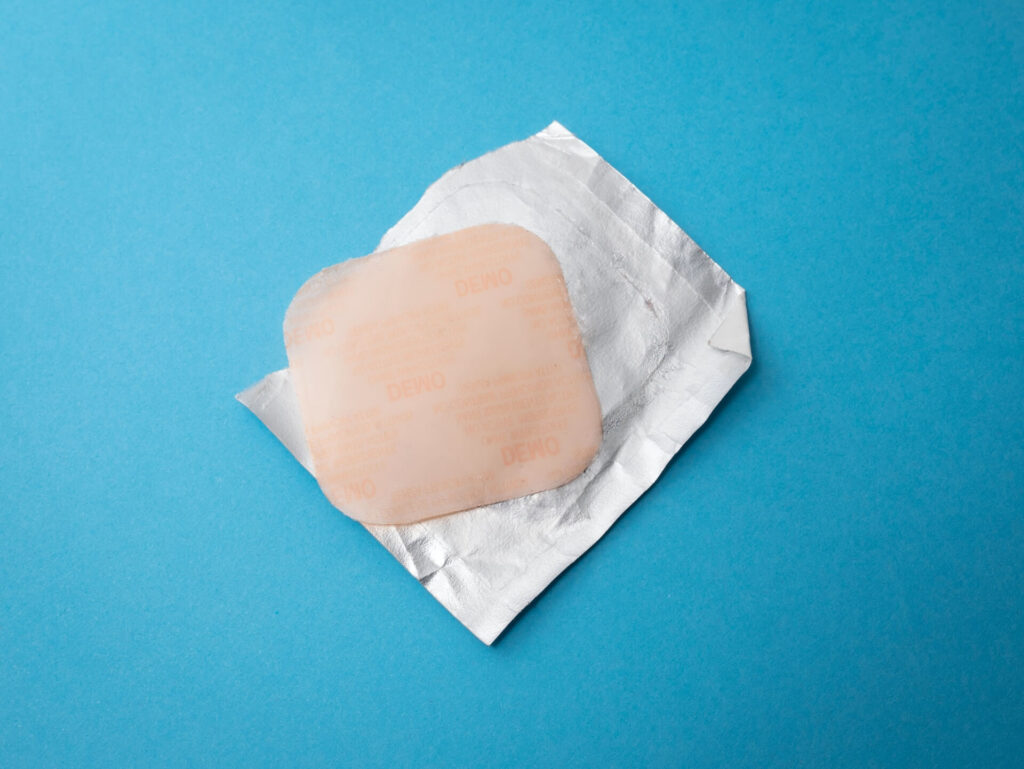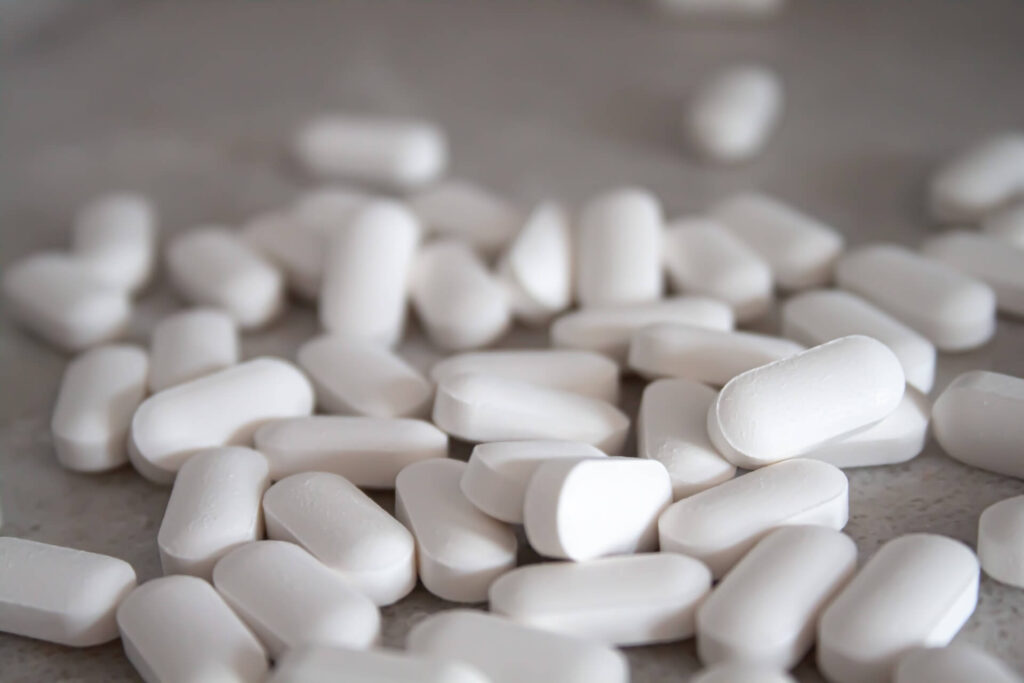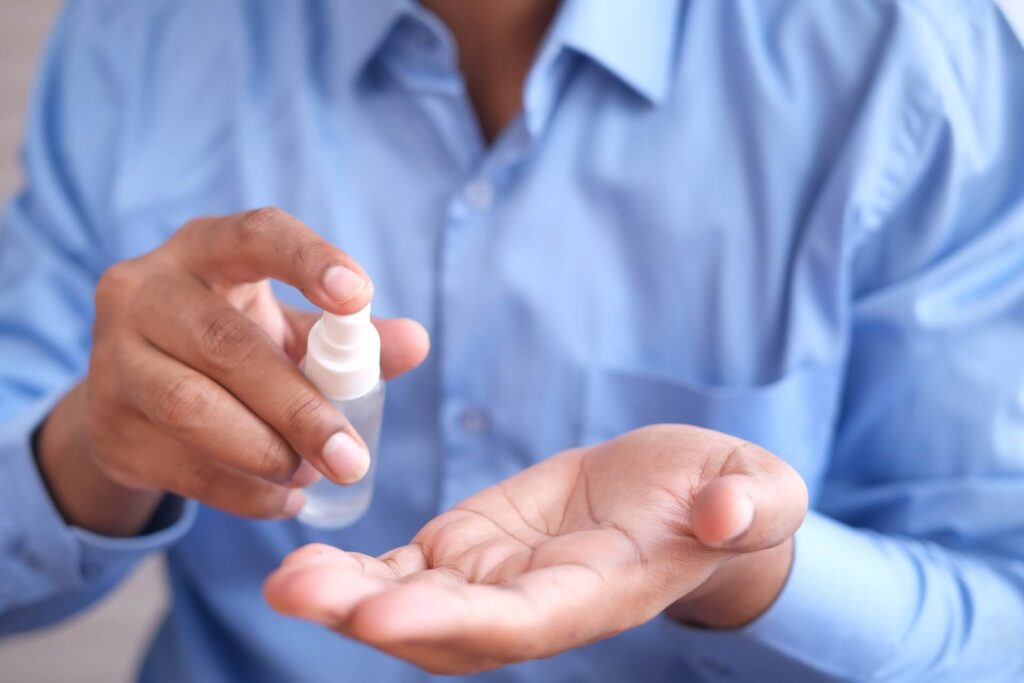TRT, testosterone replacement therapy, can be administered through injections, patches, tablets, and gels/creams. Each method has its own benefits and works differently for each person and their life circumstances.
Let’s dive into the details of each and how you can talk with your physician about which TRT method will be best for you.
Testosterone Patch Therapy

Some of the most popular ways to administer testosterone are through patches. Testosterone therapy using patches, also known as transdermal testosterone therapy, takes thin adhesive patches which are applied to the skin, and release a controlled amount of testosterone into the body over a specific period of time.
These types of patches are commonly worn on the skin of the abdomen, back, upper arms, or thighs. They can be changed daily or as prescribed.
Buccal patches are another option, but these are applied to the inner cheek or upper gum area. The testosterone is absorbed orally, and these patches may need to be applied multiple times per day.
Benefits of Testosterone Therapy Patches
1. Convenience and Consistency: Testosterone patches are applied to the skin, typically on the upper body or arms, and release a consistent amount of testosterone over a specified period (usually 24 hours). This maintains steady hormone levels, which can help in managing symptoms.
2. Non-Invasive: Transdermal patches offer a non-invasive way to administer testosterone. They don’t require injections or frequent visits to a healthcare provider, which might be preferable for some individuals.
3. Reduced Risk of Liver Issues: Unlike oral testosterone medications, transdermal patches bypass the liver’s first-pass metabolism, potentially reducing the risk of liver strain and related complications.
4. Minimized Peaks and Troughs: Some other forms of testosterone therapy, like injections, can lead to fluctuating hormone levels, resulting in “peaks” right after administration and “troughs” before the next dose. Patches help avoid these fluctuations, leading to a more stable hormone profile.
5. Skin Absorption: The skin absorbs testosterone directly, providing a controlled and gradual release. This can reduce the likelihood of mood swings or other side effects caused by abrupt hormone level changes.
Disadvantages of Testosterone Therapy Patches
1. Skin Irritation: Some individuals may experience skin irritation or allergic reactions at the application site. This can range from mild redness to more severe issues like itching or rashes.
2. Application Site Issues: Ensuring proper adhesion and placement of the patch is crucial for effective absorption. If the patch is not applied correctly, it might not deliver the intended dose of testosterone.
3. Limited Dosing Flexibility: Patches come in specific dosage strengths, and adjusting the dose can be challenging compared to some other forms of testosterone therapy. This might make it harder to fine-tune treatment for individuals with varying needs.
4. Slow Response Time: It can take some time for the body to absorb testosterone through the skin and for its effects to become noticeable. This might not be ideal for individuals seeking rapid relief from symptoms.
5. Cost: Testosterone patches can be more expensive compared to some other forms of testosterone therapy, such as injections.
Testosterone Injections

Injections are also an option, as testosterone can be administered through intramuscular injections. These are typically delivered to the gluteal muscles (or buttocks) and can be administered every few weeks or months.
This form of treatment might not be for everybody, as it is dependent on the type of testosterone used. Testosterone pellets can also be injected or implanted under the skin to release testosterone gradually over several months.
Benefits of TRT Injections
1. Rapid Effect: Testosterone injections typically result in a quicker increase in hormone levels compared to some other methods. This can lead to faster relief from symptoms associated with low testosterone.
2. Dosing Flexibility: Injections allow for more precise dosing adjustments. Healthcare providers can easily modify the dosage to achieve the desired hormone levels, tailoring treatment to individual needs.
3. Reduced Skin Sensitivity: For individuals who experience skin irritation from patches or gels, injections provide an alternative that doesn’t involve prolonged skin contact with testosterone.
4. Infrequent Administration: Depending on the formulation, injections may be administered less frequently than other methods. Some injections are given every few weeks or even once every few months.
5. Lower Risk of Application Errors: With injections, there’s no concern about proper patch adhesion or gel application, reducing the likelihood of issues related to incorrect use.
Disadvantages of TRT Injections
1. Pain or Discomfort: The injection process itself can be uncomfortable or painful for some individuals. While healthcare providers take measures to minimize pain, injection-related discomfort can still occur.
2. Fluctuating Hormone Levels: Depending on the injection interval, there can be peaks and troughs in hormone levels. Right after an injection, levels might be higher (peak), and as the time between injections increases, levels might decline (trough).
3. Injection Site Reactions: Some individuals may experience localized reactions at the injection site, such as redness, swelling, or soreness.
4. Mood Swings: The rapid increase in hormone levels after an injection can lead to mood swings or emotional fluctuations in some individuals.
Testosterone Therapy Tablets

Administering testosterone replacement therapy orally requires sublingual tablets that are designed to be dissolved under the tongue, where it’s absorbed through the thin tissues that make up the inside of your mouth.
This allows for testosterone to enter the bloodstream quickly and directly. Testosterone pills that are swallowed can lose some of the hormones when passing through the digestive system, whereas sublingual tablets eliminate that loss.
Benefits of Testosterone Therapy Tablets
1. Convenience: Oral tablets are generally easy to administer, requiring no injections or patches. This could be appealing to individuals who are uncomfortable with injections or topical applications.
2. Self-Administration: Tablets can be taken by the individual themselves without the need for healthcare provider administration, offering a level of autonomy.
3. Bypassing First-Pass Metabolism: Like transdermal patches and injections, sublingual testosterone tablets aim to bypass the liver’s first-pass metabolism. This can potentially result in higher bioavailability and more stable testosterone levels compared to traditional oral tablets.
4. Quick Absorption: Sublingual administration allows for direct absorption into the bloodstream through the rich network of blood vessels under the tongue. This could lead to more rapid onset of effects compared to oral tablets.
5. Dosing Flexibility: Sublingual tablets can offer dosing flexibility, allowing for adjustments to tailor treatment to individual needs.
Disadvantages of Testosterone Therapy Tablets
1. Limited Availability: Sublingual testosterone tablets might not be as widely available as other forms of testosterone replacement therapy, which could limit treatment options.
2. Possible Side Effects: Just like with any form of testosterone therapy, there is a potential for side effects, including those related to changes in hormone levels.
3. Monitoring Requirements: Regular monitoring of hormone levels and health status is important with any form of testosterone therapy, including sublingual tablets.
4. Cost and Insurance Coverage: As with any medical treatment, the cost and insurance coverage for sublingual testosterone tablets can vary.
5. Potential Interactions: Sublingual administration might interact with other medications or substances that are taken sublingually, so it’s important to discuss potential interactions with a healthcare provider.
Testosterone Replacement Gels And Creams

Gels are applied directly to the skin, where the testosterone is absorbed and delivered into the bloodstream. These are most commonly applied to the abdomen, upper arms, or shoulders. This form of treatment is very dependent on the patient and the product.
How often you apply the gel, and the proper dosage can vary depending on the product, and it’s important to work with your doctor to make sure you’re getting the right dosage for you.
Benefits of Testosterone Therapy Gels
1. Convenience: Testosterone gels are easy to apply and can be incorporated into a daily routine. They offer a self-administered option that doesn’t involve injections.
2. Steady Hormone Levels: When applied as directed, gels can provide a consistent and steady release of testosterone, minimizing peaks and troughs in hormone levels.
3. Absorption Control: Unlike oral tablets that pass through the liver, gels are absorbed through the skin, which may reduce the risk of liver-related issues.
4. Dosing Flexibility: Gels come in various dosage strengths, allowing healthcare providers to tailor treatment to the individual’s needs and fine-tune the dosage as necessary.
5. Limited Pain or Discomfort: Applying gels is generally painless and doesn’t involve needles, making it more tolerable for individuals who are uncomfortable with injections.
Disadvantages of Testosterone Therapy Gels
1. Transfer Risk: After applying the gel, there’s a risk that some of the testosterone could be transferred to others through skin-to-skin contact, particularly with children, pregnant individuals, or pets. It’s important to follow proper precautions, such as covering the application site and washing hands after application.
2. Skin Irritation: Some individuals might experience skin irritation, redness, itching, or rash at the application site. Switching to a different brand or formulation might be necessary if irritation occurs.
3. Inconsistent Absorption: Factors such as skin thickness, hydration, and individual differences in skin absorption can lead to variable absorption rates, potentially affecting the effectiveness of the treatment.
4. Longer Time for Effects: It can take several weeks for the effects of testosterone gels to become noticeable, as the hormone is gradually absorbed through the skin.
5. Cost: Testosterone gels can be more expensive than some other forms of testosterone therapy, such as injections. The cost may also vary based on brand and dosage strength.
Benefits of TRT And Where To Find A Clinic

Testosterone therapy is a medical treatment designed to increase the levels of the hormone for those that have low testosterone. The benefits may vary from person to person, but these treatments generally lead to improved mental well-being, increased libido, better sleep, and more energy.
There are a number of other potential benefits, and there are also a variety of methods used to administer this treatment.
When looking for testosterone therapy in Denver, it’s important to find a trusted professional to find out if the treatment may be right for you.
Because there are several methods for delivering this treatment, it’s also crucial to understand that a lot of factors go into determining which method of treatment is right for you. This can depend on things like the individual’s health status, preference for treatment, and the doctor’s recommendation.


